
Tetris Attack, also known as Panel de Pon in Japan, is a puzzle video game developed by Intelligent Systems and published by Nintendo for the Super Nintendo Entertainment System. A Game Boy version was released a year later. In the game, the player must arrange matching colored blocks in vertical or horizontal rows to clear them. The blocks steadily rise towards the top of the playfield, with new blocks being added at the bottom. Several gameplay modes are present, including a time attack and multiplayer mode.
Ridge Racer is a racing video game series developed and published for arcade systems and home game consoles by Bandai Namco Entertainment, formerly Namco. The first game, Ridge Racer (1993), was originally released in arcades for the Namco System 22 hardware, later ported to the PlayStation two years later as a launch title. It was met with several sequels and spin-off games for multiple platforms, the latest being the mobile game Ridge Racer Draw & Drift (2016) with the latest mainline game being Ridge Racer 7 (2006). Gameplay involves the player racing against computer-controlled opponents to be the first to finish in a race. Drifting is a core aspect of the series, and is used to keep speed while turning corners.

Stardust is a single screen multidirectional shooter video game for the Amiga, released by the Finnish company Bloodhouse in 1993. The game is essentially an Asteroids clone with enhancements, such as power-ups, shields, a high-energy techno module soundtrack, vivid use of colors and the occasional tunnel section that revolves around a sphere. The game's graphics drew critical acclaim for the aforementioned tunnels and the liberal use of ray-tracing. The company has since merged with Terramarque to form Housemarque.
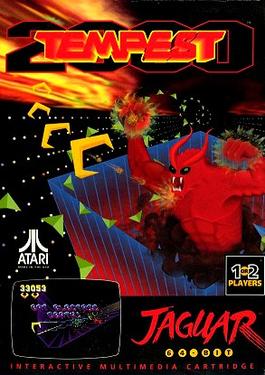
Tempest 2000 is a tube shooter video game originally developed by Llamasoft and published by Atari Corporation for the Atari Jaguar in North America on 13 April, 1994. It was released in Europe on 27 June and in Japan on 15 December of the same year, with the Japanese release being published by Mumin Corporation. Part of Atari Corp.'s 2000 series, it is a remake by Jeff Minter of Dave Theurer's 1981 arcade game Tempest, which used Atari's QuadraScan vector color display technology.

Pac-Attack, also known as Pac-Panic, is a 1993 falling-tile puzzle video game developed and published by Namco for the Super Nintendo Entertainment System and Sega Genesis. Versions for the Game Boy, Game Gear and Philips CD-i were also released. The player is tasked with clearing out blocks and ghosts without them stacking to the top of the playfield — blocks can be cleared by matching them in horizontal rows, while ghosts can be cleared by placing down a Pac-Man piece that can eat them. It is the first game in the Pac-Man series to be released exclusively for home platforms.
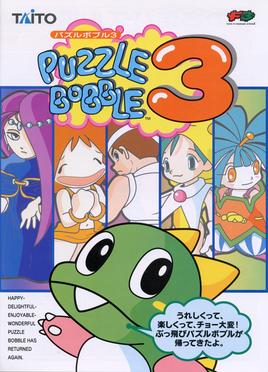
Puzzle Bobble 3 is an action puzzle video game developed by Taito. The second sequel to Puzzle Bobble, it was released for arcades in September 1996 and later ported to the Sega Saturn, PlayStation, Game Boy, Nintendo 64 and Microsoft Windows. Like its predecessors, the player is tasked with shooting balls at groups of balls, creating groups of three or more, which are then removed from play. Further ports for the Nintendo Switch, PlayStation 4 and Xbox One were released in February 2023 by City Connection alongside Puzzle Bobble 2.
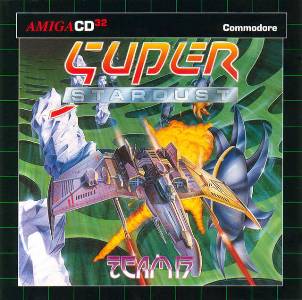
Super Stardust is a 1994 game developed by Bloodhouse and published for the Amiga (AGA) and Amiga CD32 by Team17. The game was ranked the 26th best game of all time by Amiga Power.
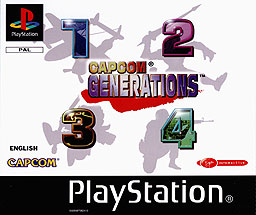
Capcom Generations is a series of five video game compilations produced by Capcom for PlayStation and Sega Saturn. Each volume contains three or four games from a particular series or game genre and were ported directly from their original arcade versions. Each disc also contains a "collection mode" featuring history, tips, artwork, character profiles, arranged music and other unlockable contents for each game. The PlayStation versions of the games also featured support for the DualShock controller.

Geometry Wars is a video game made by Bizarre Creations. Initially a minigame in Project Gotham Racing 2, an updated version, titled Retro Evolved, was eventually released for the Xbox 360. That version, at one point, held the record for the most downloaded Xbox Live Arcade Game.

Medieval Madness is a Williams pinball machine released in June 1997. Designed by Brian Eddy and programmed by Lyman Sheats, it had a production run of 4,016 units. As of April 3, 2022, the Pinside pinball community lists it as the #2 highest-ranked pinball machine ; many adherents consider it the greatest of all time.

Sins of a Solar Empire is a 2008 science fiction real-time strategy video game developed by Ironclad Games and published by Stardock Entertainment for Microsoft Windows operating systems. It is a real-time strategy (RTS) game that incorporates some elements from 4X games; its makers describe it as "RT4X". Players are given control of a spacefaring empire in the distant future, and are tasked with conquering star systems using military, economic and diplomatic means.
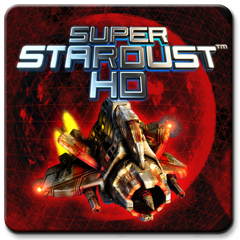
Super Stardust HD is a downloadable shoot 'em up video game that was released for the PlayStation 3 by Sony Interactive Entertainment, developed by the Finnish company Housemarque. In Asian regions, it is known as Star Strike HD. In 2015, a port for the PlayStation 4, called Super Stardust Ultra, was released. In 2016, Super Stardust Ultra VR, a PlayStation VR compatible version that contains Super Stardust Ultra, was released for the PlayStation 4. It is also available as paid downloadable content for Super Stardust Ultra.
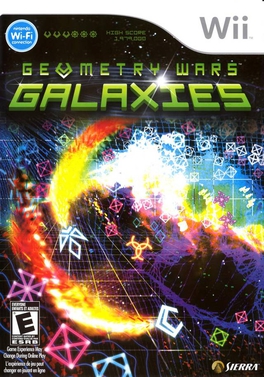
Geometry Wars: Galaxies is a multidirectional shooter video game developed by Bizarre Creations and Kuju Entertainment, and published by Vivendi Games for the Wii and Nintendo DS in 2007. As the first Geometry Wars game to be released on non-Microsoft platforms, Galaxies is a spin-off of Geometry Wars, which was originally included as a bonus game within Project Gotham Racing 2 on Microsoft's Xbox console. This updated version includes a single-player campaign mode, several multiplayer modes, Geometry Wars: Retro Evolved, and support for online leaderboards. The Wii version supports widescreen and 480p progressive scan display.
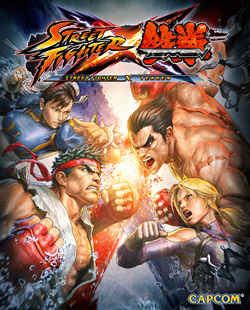
Street Fighter X Tekken is a crossover fighting game developed and published by Capcom and released in March 2012 for the PlayStation 3 and Xbox 360, in May for Windows and in October for the PlayStation Vita. The game features characters from both the Street Fighter franchise and Namco's Tekken series. In the game, each player selects two characters respectively and face other as duos in tag team fighting matches, with the objective to knock out one of the members from the opposing team. In addition to the game's multiplayer modes, the game also features a single-player Story mode with a plot revolving around a mysterious object called the "Pandora".
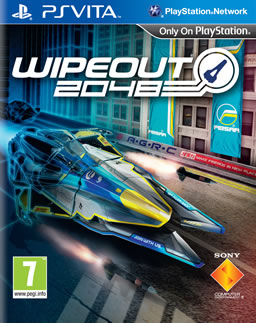
Wipeout 2048 is a racing game in which players pilot anti-gravity ships around futuristic race tracks. It was developed by Studio Liverpool and published by Sony Computer Entertainment. It was a launch game for the Sony PlayStation Vita hand-held console, released worldwide in 2012. It is the ninth instalment of the Wipeout series and the last game to be developed by Studio Liverpool before its closure in August 2012. Wipeout 2048 is a prequel to the first game in the series and is set in the years 2048, 2049, and 2050.

Furmins is a physics-based puzzle-platform game for iOS and PlayStation Vita.
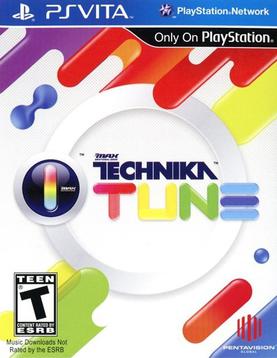
DJMax Technika Tune is a music game for the PlayStation Vita published and developed by Pentavision Studio in South Korea, and is an adaptation of the earlier DJMax Technika arcade game series. It is the 16th title in the DJMax series.
Resogun is a shoot 'em up video game developed by Housemarque and published by Sony Computer Entertainment for the PlayStation 4. It was originally released in North America and PAL regions in November 2013, while ports for PlayStation 3 and PlayStation Vita developed by Climax Studios were released in December 2014. Resogun: Heroes, the first downloadable content (DLC), was released in North America on June 24, 2014, while the second DLC, Resogun: Defenders was released on February 17, 2015. Resogun draws heavily from the games Defender and Datastorm, and is considered the spiritual successor to Housemarque's previous shoot 'em up games Super Stardust HD and Super Stardust Delta.
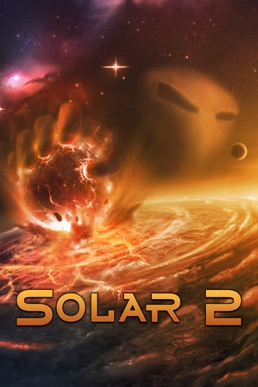
Solar 2 is an open world sandbox video game developed by Australian developer Jay Watts' video game studio, Murudai. It was released on 17 June 2011 on Steam for Microsoft Windows and on 19 June 2011 on Xbox Live Indie Games for the Xbox 360. The game was developed with Microsoft's XNA tools, and its development was inspired by indie games such as flOw. The game follows the player in their mission to accumulate enough mass to become several astronomical objects, eventually becoming a Big Crunch, which then produces a Big Bang.

Mobile Suit Gundam Extreme VS-Force is a portable spin-off of the Extreme Vs. series, developed by Bandai Namco Studios and Lancarse for PlayStation Vita.
















